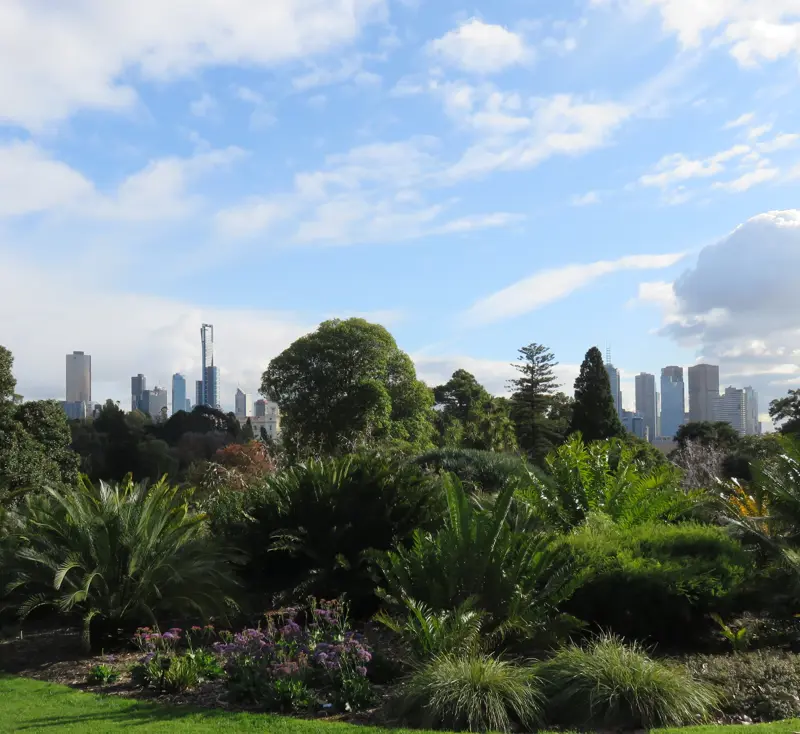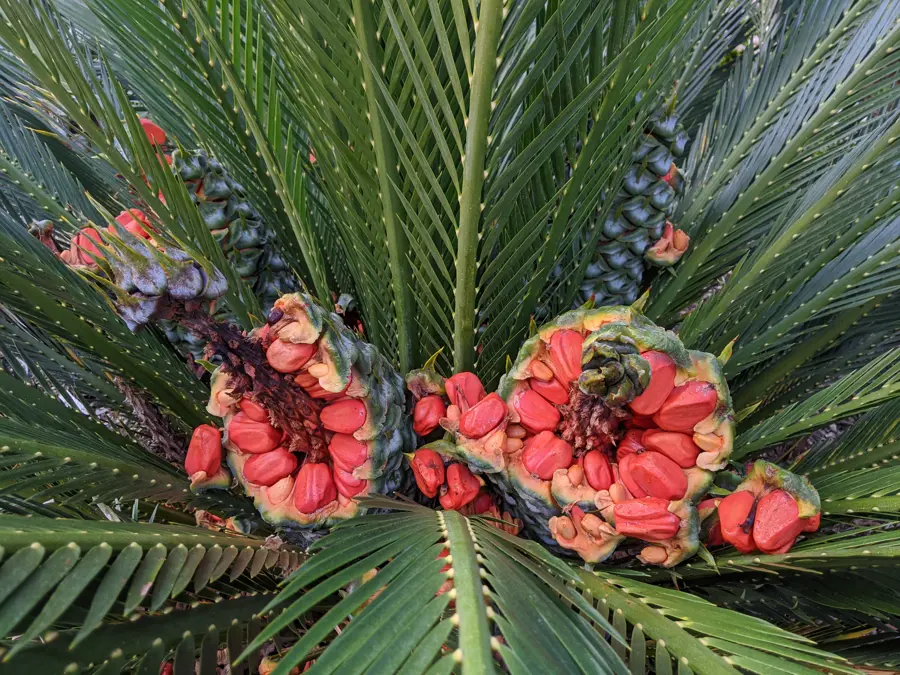
Visit the Cycad Collection.
A little bit palm-like and a little bit fern-like, cycads have changed little since grazed upon by dinosaurs.
While you’ll find the Cycad Collection focused on the Eastern Lawn, individuals occur throughout the Gardens – their distinctive form an important aesthetic.
Found from desert to rainforest, cycad occur in many countries throughout the world. Ancient heritage, slow-growers, long-livers, often with a specific pollinator – quite simply, a fascinating group of plants.

